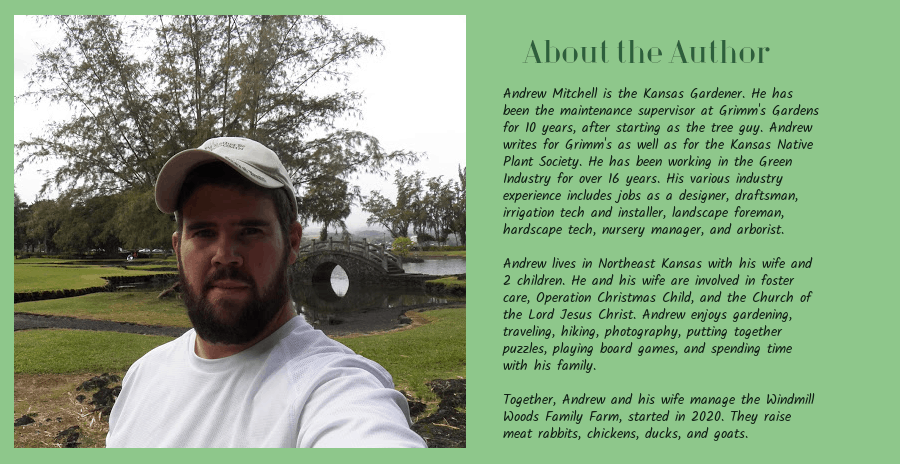Milkweed is our July Plant of the Month. When you think butterfly conservation, butterfly gardening, or butterflies, you also think mostly about milkweeds. But why is that?
The Monarch butterfly, often considered the most majestic of North American butterflies, can only raise its young on milkweeds, and a couple tropical milkweed cousins. Because of the Monarch’s journey across America from north to south and back again each year, they are very well known. And milkweeds are well known.
But did you know that other butterflies and moths use milkweeds as a host plant? Or that many insects like to pollinate on them? There are 78 species of milkweed (Asclepias) in the United States. Of these, 16 grow in our area of the central Great Plains.
Out of those 16 species, 8 have landscape value, while the rest can be used in prairie restorations. Two of them, Mead’s Milkweed (Asclepias meadii) and Woolly Milkweed (Asclepias lanuginosa) are rare and protected. Let us discuss the 8 species with landscape and garden value.
Milkweed species good for gardening
While many companies may sell plugs of more than 8 species of milkweed, these 8 are in fact the best for landscape or home garden use. Yes, a couple of the species will spread quickly by rhizomes or seed, but they are still easy to plant and grow. Some species need very careful tending and locations, making them unlikely to do well in garden settings.
What are these 8 species of milkweed? You will see the many common names associated with some of these species.
- viridis – Spider, green, or green antelopehorns
- verticillata – whorled
- syriaca – common
- tuberosa – butterfly, butterfly weed
- sullivantii – prairie, Sullivant’s
- speciosa – showy, starflower
- purpurascens – purple
- incarnata – swamp, rose, marsh

1. Spider milkweed
Asclepias viridis is most commonly known as spider milkweed, though green antelopehorns is also common. But since there is a species called antelopehorns (A. asperula), I tend to use spider as the common name. We have had some production problems with spider milkweed. It just does not like being in a container. But it has definite value.
If bought as plugs, spider milkweed can be an excellent addition to the garden. The plants themselves start growing in late March to early April, well before other species. I have seen first blooms as early as late April to early May. This makes them great for early foraging bumblebees, honeybees, and early butterflies.
The plants themselves grow 16 inches tall by 2 feet wide. Flowers are green and purple, quite striking. It grows in clumps and spreads by seed.
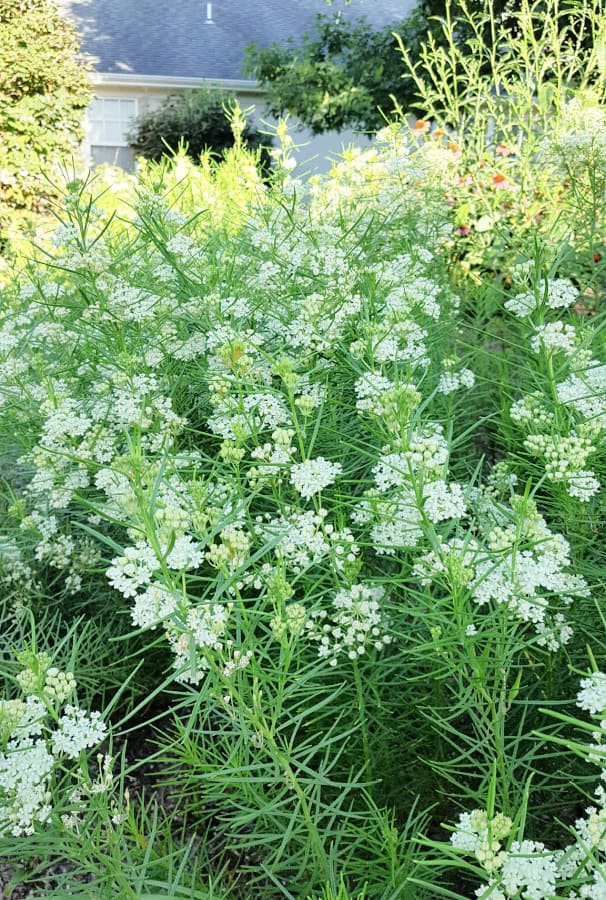
2. Whorled Milkweed
Asclepias verticillata, known mostly as whorled milkweed, is a good plant to add into a meadow garden in the 3rd year. After other plants have been established.
It grows very quickly by rhizomes as well as by seed. This is one of my favorite milkweeds, because it was one of the first that I learned to identify. Depending on location, it can grow between 1 and 4 feet tall. The leaves are narrow and rotate around the stem in whorls. The flowers are small and pure white.
Because of its texture, this species looks great in a mass planting. It is almost like fronds of ferns or asparagus. I recommend planting this species by plugs, as it also does not like being in a nursery container.

3. Common Milkweed
When I hear locals talking about this species, Asclepias syriaca, they just call it milkweed. It is definitely more common than other species in our area because it will grow just about anywhere. From farm fields to ditches to garden beds. It spreads by rhizomes and seeds.
Common milkweed grows 3 to 5 feet tall and can form large colonies if left alone. The flowers are mostly light pink. However, I have found a clump in North Central Kansas that is an off-white color when blooming. All milkweeds are very fragrant, but common is the most fragrant of all.
It grows decent in nursery containers, so it is easy to find in garden centers. Plant it in meadow gardens, Monarch Waystations, or in butterfly gardens. If you want to try to contain it, plant it in a buried tractor tire rim.
4. Butterfly Milkweed
Possibly the most well-known milkweed in North America, east of the Rockies, butterfly milkweed is a great landscape plant. It grows 16 inches tall by 2 feet wide and comes in a couple of colors. Most of the flowers are bright orange, but there is one cultivar that is yellow (‘Hello Yellow’) and I have seen some pure red flowers in the wild.
In the landscape, this species performs well in borders, flower gardens, or just about any spot in full sun. It will grow in part sun, as long as the afternoon sun gets to it. While it has been said that Monarch butterflies rarely use this species as a host plant, it is what I see caterpillars on the most in my gardens.
Butterfly weed grows in a clump form and spreads by seed. Naturally, it grows along dry, rocky ridges, and in upland sites. It grows easily in nursery containers and is a big market item.


5. Sullivant’s Milkweed
It was more than 2 years after I first identified Sullivant’s milkweed before I learned about its other common name, Prairie milkweed. This species looks very similar to common (A. syriaca), but the leaves are slightly different and the habitat is different. Sullivant’s grows in wet prairies or ditches, and would do well in a bog garden or rain garden area.
Sullivant’s grows 3 to 5 feet wide and can form large colonies by rhizomes. It grows decent in nursery containers, but is better planted by plugs into a wet meadow garden or bog garden area. The flowers are light pink to pink, occasionally white.

6. Showy Milkweed
This is one of the prettiest species when it is blooming in the landscape. We have used it in Monarch Waystations and it performs beautifully. Showy has bright pink to light pink flowers in the shape of a 5-petaled stars. Just like common milkweed, its flowers are very fragrant. While showy is a more west-growing species, it crosses easily with common milkweed wherever their ranges overlap.
Showy grows 3 to 4 feet tall and forms small colonies by rhizomes or seed. It does well in nursery containers and is fairly easy to find. Plant it into meadow gardens, Monarch Waystations, or butterfly gardens, in the 3rd year to reduce competitiveness.
7. Purple Milkweed
This is another early blooming species, with the rich purple-pink flowers opening in mid-May. I use this species a lot in part shade conditions. Indeed, it grows much like a spring ephemeral; coming up early, producing flowers and setting seed before the leaves fade away in the heat of summer.
By the time seed has ripened on this species, my other plants have overgrown it, hiding it in the Monarch Waystation. It grows 2 to 4 feet tall in small clumps which spread by seed. Plant it by plugs if you cannot find containers of it. I think this species is the most photogenic of all Asclepias species.
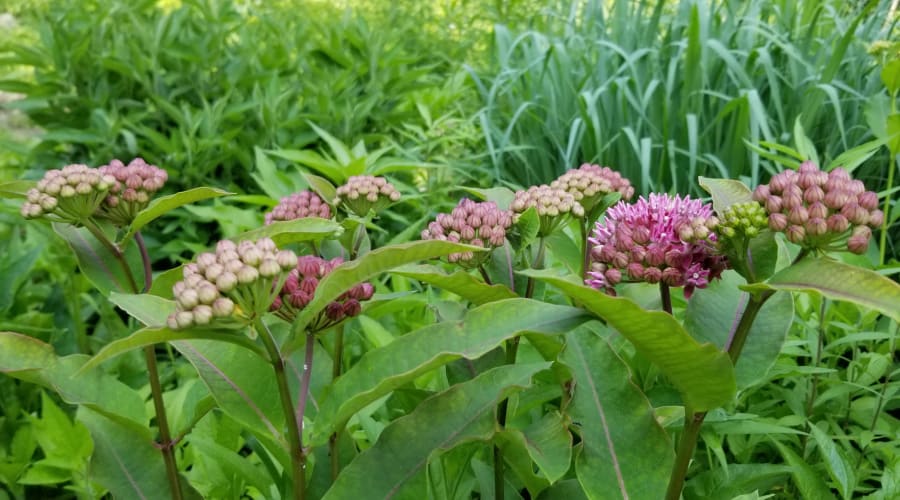
8. Marsh Milkweed
Truly, this is fast becoming one of the most widely planted milkweeds in America. It is adaptable to both wet and dry sites, and can take hot summers. This species grows naturally in marshes and bogs, or along lakes and waterways. It grows 3 to 5 feet tall in a vase-shaped clump.
Also known as rose milkweed, there are several distinct genotypes within its range. For example, the cultivar ‘Ice Ballet’ has pure white flowers on a 3 foot tall plant, and comes from Minnesota. Flowers of the central Great Plains genotypes are pink or rose colored. One cultivar is called ‘Cinderella’ and has bright pink flowers.
Easily grown in nursery containers, plant it in bog or rain gardens, meadows, along ponds and lakes, or in Monarch Waystations and butterfly gardens.
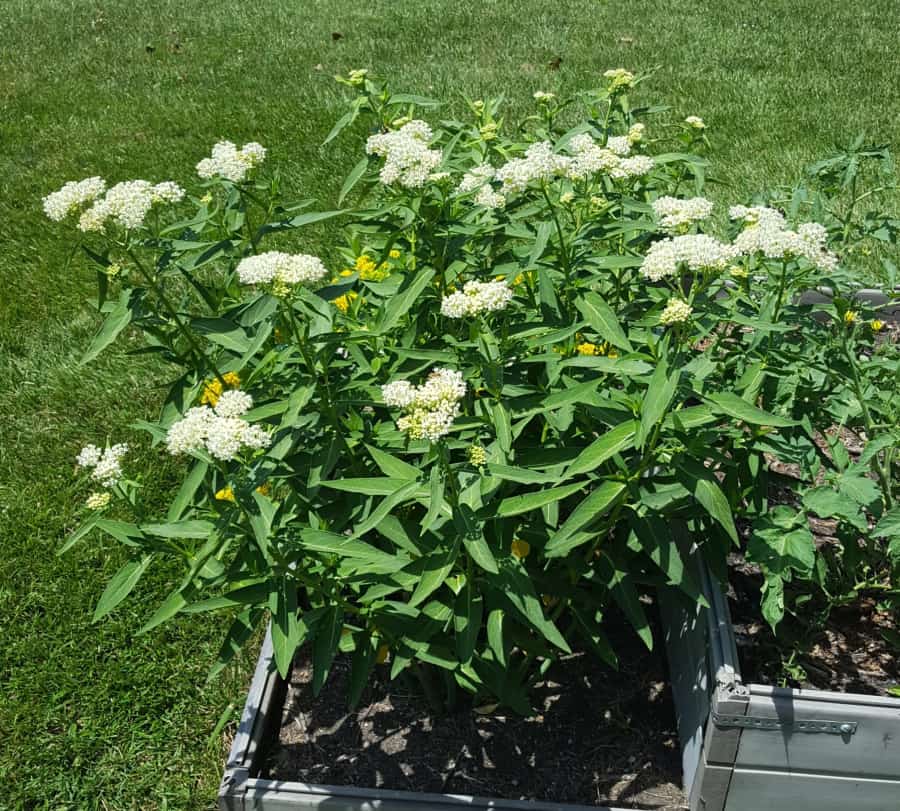
What butterflies and moths use milkweeds as host plants?
What is a host plant? A host plant is a plant that a specific butterfly or moth uses to raise its caterpillars on. Some butterflies are generalists and use a wide range of plant families, such as the Painted Lady butterfly. Others are specialists and use only 1 or 2 genuses of plants, such as the Monarch.
List of butterflies and moths
- Monarch butterfly
- Queen butterfly
- Soldier butterfly
- Milkweed Tussock Moth
- Unexpected Cycnia Moth
- Delicate Cycnia Moth

What other insects use milkweeds?
When we are talking about the use of milkweeds, it consists of 2 parts, insects that feed on the leaves, and insects that use the flowers for nectar. There are a few insects that feed directly on milkweeds. They include the following.
- Swamp milkweed beetle
- Large milkweed bug
- Oleander aphids
- Red milkweed beetle
- Small milkweed bug
- Blue milkweed Beetle
- Dogbane leaf beetle
- Milkweed Borer Beetle
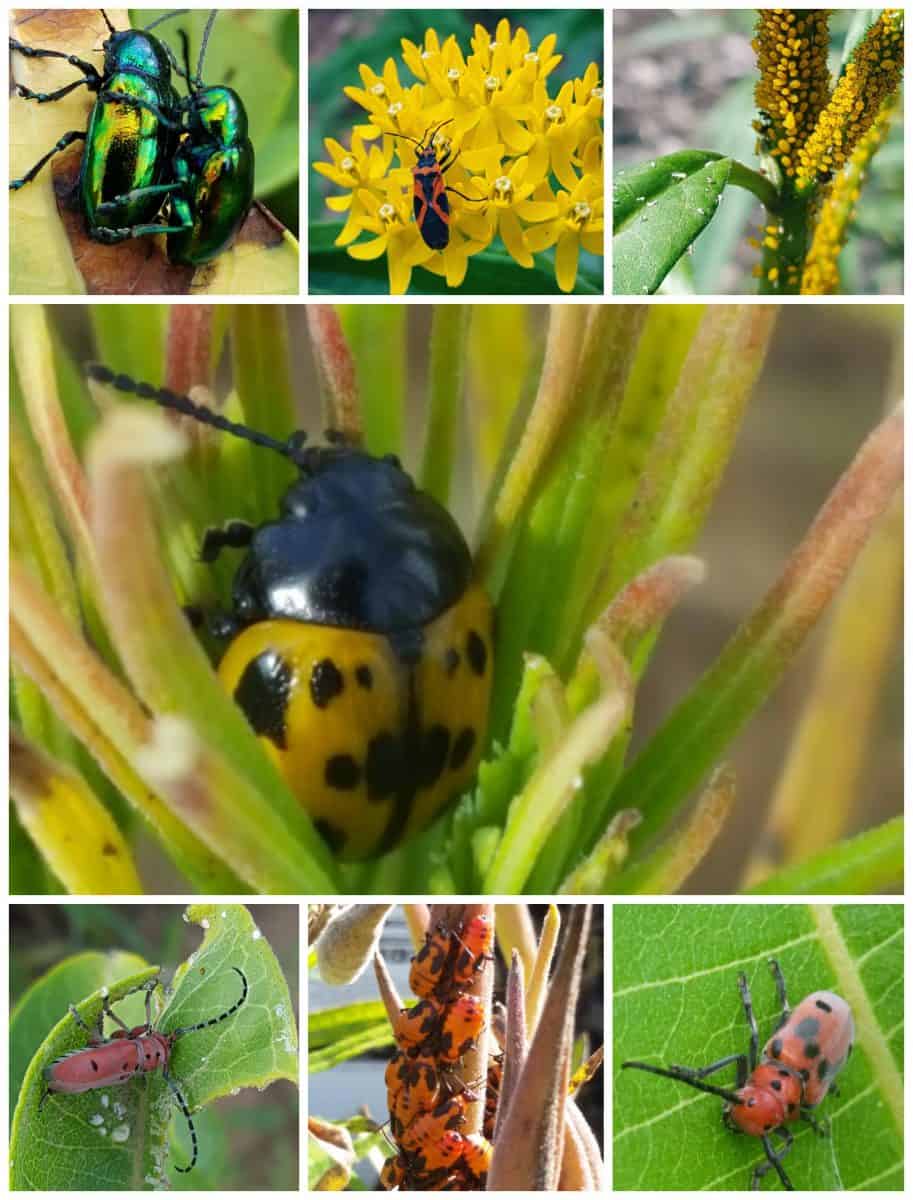
I have seen a large number of insects using milkweeds for nectar, see photos below.

Bottom Row: Brown-Belted Bumblebee, Honeybee, Spangled Flower Beetle
Companion Plants
When you are planting into butterfly gardens, meadows, or Monarch Waystations, you would not just plant a bed of milkweeds. There are many other plants that pair well with these in the garden. Use any of the following plants when building you garden:
- False sunflower (Heliopsis helianthoides)
- Purple coneflower (Echinacea purpurea)
- Prairie blazingstar (Liatris pycnostachya)
- Greyhead coneflower (Ratibida pinnata)
- Culver’s Root (Veronicastrum virginicum)
- Tall Phlox (Phlox paniculata)
- Wild Indigo (Baptisia australis)
- Beebalm (Monarda fistulosa)
- Aromatic aster (Symphyotrichum oblongifolium)
- Switchgrass (Panicum virgatum)
Conclusion
Milkweed is an adaptable plant with many species for gardeners in the central Great Plains and Midwest. It is not hard to choose a few species to add to a garden or meadow. Pollinators love it and it is a host plant for many species including the majestic Monarch butterfly.
Happy planting!
